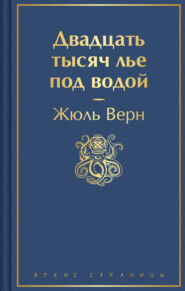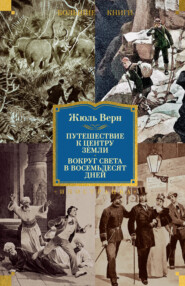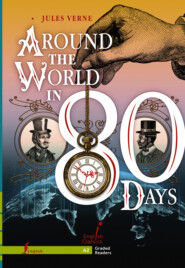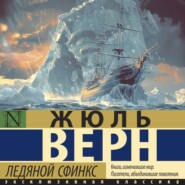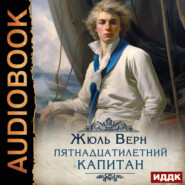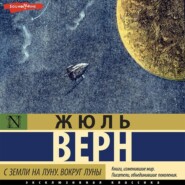По всем вопросам обращайтесь на: info@litportal.ru
(©) 2003-2024.
✖
Celebrated Travels and Travellers, Part 3. The Great Explorers of the Nineteenth Century
Настройки чтения
Размер шрифта
Высота строк
Поля
Denham thought he was safe, when his horse fell a second time, flinging his master violently against a tree. This time when the major rose he found himself with neither horse nor weapons; and the next moment he was surrounded by enemies, who stripped him and wounded him in both hands and the right side, leaving him half dead at last to fight over his clothes, which seemed to them of great value.
Availing himself of this lucky quarrel, Denham slipped under a horse standing by, and disappeared in the thicket. Naked, bleeding, wild with pain, he reached the edge of a ravine with a mountain stream flowing through it. His strength was all but gone, and he was clutching at a bough of a tree overhanging the water with a view to dropping himself into it as the banks were very steep, and the branches were actually bending beneath his weight, when from beneath his hand a gigantic liffa, the most venomous kind of serpent in the country, rose from its coil in the very act of striking. Horror-struck, Denham let slip the branch, and tumbled headlong into the water, but fortunately the shock revived him, he struck out almost unconsciously, swam to the opposite bank, and climbing it, found himself safe from his pursuers.
Fortunately the fugitive soon saw a group of horsemen amongst the trees, and in spite of the noise of the pursuit, he managed to shout loud enough to make them hear him. They turned out to be Barca Gana and Boo-Khaloum, with some Arabs. Mounted on a sorry steed, with no other clothing than an old blanket swarming with vermin, Denham travelled thirty-seven miles. The pain of his wounds was greatly aggravated by the heat, the thermometer being at 32°.
The only results of the expedition, which was to have brought in such quantities of booty and numerous slaves, were the deaths of Boo-Khaloum and thirty-six of his Arabs, the wounding of nearly all the rest, and the loss or destruction of all the horses.
The eighty miles between Mora and Kouka were traversed in six days. Denham was kindly received in the latter town by the sultan, who sent him a native garment to replace his lost wardrobe. The major had hardly recovered from his wounds and fatigue, before he took part in a new expedition, sent to Munga, a province on the west of Bornou, by the sheikh, whose authority had never been fully recognized there, and whose claim for tribute had been refused by the inhabitants.
Denham and Oudney left Kouka on the 22nd May, and crossed the Yeou, then nearly dried up, but an important stream in the rainy season, and visited Birnie, with the ruins of the capital of the same name, which was capable of containing two hundred thousand inhabitants. The travellers also passed through the ruins of Gambarou with its magnificent buildings, the favourite residence of the former sultan, destroyed by the Fellatahs, Kabshary, Bassecour, Bately, and many other towns or villages, whose numerous populations submitted without a struggle to the Sultan of Bornou.
The rainy season was disastrous to the members of the expedition, Clapperton fell dangerously ill of fever, and Oudney, whose chest was delicate even before he left England, grew weaker every day. Denham alone kept up. On the 14th of December, when the rainy season was drawing to a close, Clapperton and Oudney started for Kano. We shall presently relate the particulars of this interesting part of their expedition.
Seven days later, an ensign, named Toole, arrived at Kouka, after a journey from Tripoli, which had occupied only three months and fourteen days.
In February, 1824, Denham and Toole made a trip into Luggun, on the south of Lake Tchad. All the districts near the lake and its tributary, the Shari, are marshy, and flooded during the rainy season. The unhealthiness of the climate was fatal to young Toole, who died at Angala, on the 26th of February, at the early age of twenty-two. Persevering, enterprising, bright and obliging, with plenty of pluck and prudence, Toole was a model explorer.
Luggun was then very little known, its capital Kernok, contained no less than 15,000 inhabitants. The people of Luggun, especially the women – who are very industrious, and manufacture the finest linens, and fabrics of the closest texture – are handsomer and more intelligent than those of Bornou.
The necessary interview with the sultan ended, after an exchange of complimentary speeches and handsome presents, in this strange proposal from his majesty to the travellers: "If you have come to buy female slaves, you need not be at the trouble to go further, as I will sell them to you as cheap as possible." Denham had great trouble in convincing the merchant prince that such traffic was not the aim of his journey, but that the love of science alone had brought him to Luggun.
On the 2nd of March, Denham returned to Kouka, and on the 20th of May, he was witness to the arrival of Lieutenant Tyrwhitt, who had come to take up his residence as consul at the court of Bornou, bearing costly presents for the sultan.
After a final excursion in the direction of Manou, the capital of Kanem, and a visit to the Dogganah, who formerly occupied all the districts about Lake Fitri, the major joined Clapperton in his return journey to Tripoli, starting on the 16th of April, and arriving there in safety at the close of a long and arduous journey, whose geographical results, important in any case, had been greatly enhanced by the labours of Clapperton. To the adventures and discoveries of the latter we must now turn. Clapperton and Oudney started for Kano, a large Fellatah town on the west of Lake Tchad, on the 14th of December, 1823, followed the Yeou as far as Damasak, and visited the ruins of Birnie, and those of Bera, on the shores of a lake formed by the overflowing of the Yeou, Dogamou and Bekidarfi, all towns of Houssa. The people of this province, who were very numerous before the invasion of the Fellatahs, are armed with bows and arrows, and trade in tobacco, nuts, gouro, antimony, tanned hares' skins, and cotton stuffs in the piece and made into clothes.
The caravan soon left the banks of the Yeou or Gambarou, and entered a wooded country, which was evidently under water in the rainy season.
The travellers then entered the province of Katagoum, where the governor received them with great cordiality, assuring them that their arrival was quite an event to him, as it would be to the Sultan of the Fellatahs, who, like himself, had never before seen an Englishman. He also assured them that they would find all they required in his district, just as at Kouka.
The only thing which seemed to surprise him much, was the fact that his visitors wanted neither slaves, horses, nor silver, and that the sole proof of his friendship they required was permission to collect flowers and plants, and to travel in his country.
According to Clapperton's observations, Katagoum is situated in lat. 12° 17' 11" N., and about 12° E. long. Before the Fellatahs were conquered, it was on the borders of the province of Bornou. It can send into the field 4000 cavalry, and 2000 foot soldiers, armed with bows and arrows, swords and lances. Wheat, and oxen, with slaves, are its chief articles of commerce. The citadel is the strongest the English had seen, except that of Tripoli. Entered by gates which are shut at night, it is defended by two parallel walls, and three dry moats, one inside, one out, and the third between the two walls which are twenty feet high, and ten feet wide at the base. A ruined mosque is the only other object of interest in the town, which consists of mud houses, and contains some seven or eight hundred inhabitants.
There the English for the first time saw cowries used as money. Hitherto native cloth had been the sole medium of exchange.
South of Katagoum is the Yacoba country, called Mouchy by the Mahommedans. According to accounts received by Clapperton, the people of Yacoba, which is shut in by limestone mountains, are cannibals. The Mahommedans, however, who have an intense horror of the "Kaffirs," give no other proof of this accusation than the statement that they have seen human heads and limbs hanging against the walls of the houses.
In Yacoba rises the Yeou, a river which dries up completely in the summer; but, according to the people who live on its banks, rises and falls regularly every week throughout the rainy season.
On the 11th of January, the journey was resumed; but a halt had to be made at Murmur at noon of the same day, as Oudney showed signs of such extreme weakness and exhaustion, that Clapperton feared he could not last through another day. He had been gradually failing ever since they left the mountains of Obarri in Fezzan, where he had inflammation of the throat from sitting in a draught when over-heated.
On the 12th of January, Oudney took a cup of coffee at daybreak, and at his request Clapperton changed camels with him. He then helped him to dress, and leaning on his servant, the doctor left the tent. He was about to attempt to mount his camel, when Clapperton saw death in his face. He supported him back to the tent, where to his intense grief, he expired at once, without a groan or any sign of suffering. Clapperton lost no time in asking the governor's permission to bury his comrade; and this being obtained, he dug a grave for him himself under an old mimosa-tree near one of the gates of the town. After the body had been washed according to the custom of the country, it was wrapped in some of the turban shawls which were to have served as presents on the further journey; the servants carried it to its last resting-place, and Clapperton read the English burial service at the grave. When the ceremony was over, he surrounded the modest resting-place with a wall of earth, to keep off beasts of prey, and had two sheep killed, which he divided amongst the poor.
Thus closed the career of the young naturalist and ship's doctor, Oudney. His terrible malady, whose germs he had brought with him from England, had prevented him from rendering so much service to the expedition as the Government had expected from him, although he never spared himself, declaring that he felt better on the march, than when resting. Knowing that his weakened constitution would not admit of any sustained exertion on his part, he would never damp the ardour of his companions.
After this sad event, Clapperton resumed his journey to Kano, halting successively at Digou, situated in a well-cultivated district, rich in flocks; Katoungora, beyond the province of Katagoum; Zangeia, once – judging from its extent and the ruined walls still standing – an important place, near the end of the Douchi chain of hills; Girkoua, with a finer market-place than that of Tripoli; and Souchwa, surrounded by an imposing earthwork.
Kano, the Chana of Edrisi and other Arab geographers, and the great emporium of the kingdom of Houssa, was reached on the 20th January.
Clapperton tells us that he had hardly entered the gates before his expectations were disappointed; after the brilliant description of the Arabs, he had expected to see a town of vast extent. The houses were a quarter of a mile from the walls, and stood here and there in little groups, separated by large pools of stagnant water. "I might have dispensed with the care I had bestowed on my dress," (he had donned his naval uniform), "for the inhabitants, absorbed in their own affairs, let me pass without remark and never so much as looked at me."
Kano, the capital of the province of that name and one of the chief towns of the Soudan, is situated in N. lat. 12° 0' 19", and E. long. 9° 20'. It contains between thirty and forty thousand inhabitants, of whom the greater number are slaves.
The market, bounded on the east and west by vast reedy swamps, is the haunt of numerous flocks of ducks, storks, and vultures, which act as scavengers to the town. In this market, stocked with all the provisions in use in Africa, beef, mutton, goats' and sometimes even camels' flesh, are sold.
Writing paper of French manufacture, scissors and knives, antimony, tin, red silk, copper bracelets, glass beads, coral, amber, steel rings, silver ornaments, turban shawls, cotton cloths, calico, Moorish habiliments, and many other articles, are exposed for sale in large quantities in the market-place of Kano.
There Clapperton bought for three piastres, an English cotton umbrella from Ghadames. He also visited the slave-market, where the unfortunate human chattels are as carefully examined as volunteers for the navy are by our own inspectors.
The town is very unhealthy, the swamps cutting it in two, and the holes produced by the removal of the earth for building, produce permanent malaria.
It is the fashion at Kano to stain the teeth and limbs with the juice of a plant called gourgi, and with tobacco, which produces a bright red colour. Gouro nuts are chewed, and sometimes even swallowed when mixed with trona, a habit not peculiar to Houssa, for it extends to Bornou, where it is strictly forbidden to women. The people of Houssa smoke a native tobacco.
On the 23rd of February, Clapperton started for Sackatoo. He crossed a picturesque well-cultivated country, whose wooded hills gave it the appearance of an English park. Herds of beautiful white or dun-coloured oxen gave animation to the scenery.
The most important places passed en route by Clapperton were Gadania, a densely populated town, the inhabitants of which had been sold as slaves by the Fellatahs, Doncami, Zirmia, the capital of Gambra, Kagaria, Kouari, and the wells of Kamoun, where he met an escort sent by the sultan.
Sackatoo was the most thickly populated city that the explorer had seen in Africa. Its well-built houses form regular streets, instead of clustering in groups as in the other towns of Houssa. It is surrounded by a wall between twenty and thirty feet high, pierced by twelve gates, which are closed every evening at sunset, and it boasts of two mosques, with a market and a large square opposite to the sultan's residence.
The inhabitants, most of whom are Fellatahs, own many slaves; and the latter, those at least who are not in domestic service, work at some trade for their masters' profit. They are weavers, masons, blacksmiths, shoemakers, or husbandmen.
To do honour to his host, and also to give him an exalted notion of the power and wealth of England, Clapperton assumed a dazzling costume when he paid his first visit to Sultan Bello. He covered his uniform with gold lace, donned white trousers and silk stockings, and completed this holiday attire by a Turkish turban and slippers. Bello received him, seated on a cushion in a thatched hut like an English cottage. The sultan, a handsome man, about forty-five years old, wore a blue cotton tobe and a white cotton turban, one end of which fell over his nose and mouth in Turkish fashion.
Bello accepted the traveller's presents with childish glee. The watch, telescope, and thermometer, which he naively called a "heat watch," especially delighted him; but he wondered more at his visitor than at any of his gifts. He was unwearied in his questions as to the manners, customs, and trade of England; and after receiving several replies, he expressed a wish to open commercial relations with that power. He would like an English consul and a doctor to reside in a port he called Raka, and finally he requested that certain articles of English manufacture should be sent to Funda, a very thriving sea-port of his. After a good many talks on the different religions of Europe, Bello gave back to Clapperton the books, journals, and clothes which had been taken from Denham, at the time of the unfortunate excursion in which Boo-Khaloum lost his life.
On the 3rd May, Clapperton took leave of the sultan. This time there was a good deal of delay before he was admitted to an audience. Bello was alone, and gave the traveller a letter for the King of England, with many expressions of friendship towards the country of his visitor, reiterating his wish to open commercial relations with it and begging him to let him have a letter to say when the English expedition promised by Clapperton would arrive on the coast of Africa.
Clapperton returned by the route by which he had come, arriving on the 8th of July at Kouka, where he rejoined Denham. He had brought with him an Arab manuscript containing a geographical and historical picture of the kingdom of Takrour, governed by Mahommed Bello of Houssa, author of the manuscript. He himself had not only collected much valuable information on the geology and botany of Bornou and Houssa, but also drawn up a vocabulary of the languages of Begharmi, Mandara, Bornou, Houssa, and Timbuctoo.
The results of the expedition were therefore considerable. The Fellatahs had been heard of for the first time, and their identity with the Fans had been ascertained by Clapperton in his second journey. It had been proved that these Fellatahs had created a vast empire in the north and west of Africa, and also that beyond a doubt they did not belong to the negro race. The study of their language, and its resemblance to certain idioms not of African origin, will some day throw a light on the migration of races. Lastly, Lake Tchad had been discovered, and though not entirely examined, the greater part of its shores had been explored. It had been ascertained to have two tributaries: the Yeou, part of whose course had been traced, whilst its source had been pointed out by the natives, and the Shari, the mouth and lower portion of which had been carefully examined by Denham. With regard to the Niger, the information collected by Clapperton from the natives was still very contradictory, but the balance of evidence was in favour of its flowing into the Gulf of Benin. However, Clapperton intended, after a short rest in England, to return to Africa, and landing on the western coast make his way up the Kouara or Djoliba as the natives call the Niger; to set at rest once for all the dispute as to whether that river was or was not identical with the Nile; to connect his new discoveries with those of Denham, and lastly to cross Africa, taking a diagonal course from Tripoli to the Gulf of Benin.
II
Clapperton's second journey – Arrival at Badagry – Yariba and its capital Katunga – Boussa – Attempts to get at the truth about Mungo Park's fate – "Nyffé," Yaourie, and Zegzeg – Arrival at Kano – Disappointments – Death of Clapperton – Return of Lander to the coast – Tuckey on the Congo – Bowditch in Ashantee – Mollien at the sources of the Senegal and Gambia – Major Grey – Caillié at Timbuctoo – Laing at the sources of the Niger – Richard and John Lander at the mouth of the Niger – Cailliaud and Letorzec in Egypt, Nubia, and the oasis of Siwâh.
So soon as Clapperton arrived in England, he submitted to Lord Bathurst his scheme for going to Kouka viâ the Bight of Benin – in other words by the shortest way, a route not attempted by his predecessors – and ascending the Niger from its mouth to Timbuctoo.
In this expedition three others were associated with Clapperton, who took the command. These three were a surgeon named Dickson, Pearce, a ship's captain, and Dr. Morrison, also in the merchant service; the last-named well up in every branch of natural history.
On the 26th November, 1825, the expedition arrived in the Bight of Benin. For some reason unexplained, Dickson had asked permission to make his way to Sockatoo alone and he landed for that purpose at Whydah. A Portuguese named Songa, and Colombus, Denham's servant, accompanied him as far as Dahomey. Seventeen days after he left that town, Dickson reached Char, and a little later Yaourie, beyond which place he was never traced.[2 - Dickson quarrelled with a native chief, and was murdered by his followers. See Clapperton's "Last Journey in Africa." —Trans.]
The other explorers sailed up the Bight of Benin, and were warned by an English merchant named Houtson, not to attempt the ascent of the Quorra, as the king of the districts watered by it had conceived an intense hatred of the English, on account of their interference with the slave-trade, the most remunerative branch of his commerce.
It would be much better, urged Houtson, to go to Badagry, no great distance from Sackatoo, the chief of which, well-disposed as he was to travellers, would doubtless give them an escort as far as the frontiers of Yariba. Houtson had lived in the country many years, and was well acquainted with the language and habits of its people. Clapperton, therefore, thought it desirable to attach him to the expedition as far as Katunga, the capital of Yariba.
The expedition disembarked at Badagry, on the 29th November, 1825, ascended an arm of the Lagos, and then, for a distance of two miles, the Gazie creek, which traverses part of Dahomey. Descending the left bank, the explorers began their march into the interior of the country, through districts consisting partly of swamps and partly of yam plantations. Everything indicated fertility. The negroes were very averse to work, and it would be impossible to relate the numerous "palavers" and negotiations which had to be gone through, and the exactions which were submitted to, before porters could be obtained.
The explorers succeeded, in spite of these difficulties, in reaching Jenneh, sixty miles from the coast. Here Clapperton tells us he saw several looms at work, as many as eight or nine in one house, a regular manufactory in fact. The people of Jenneh also make earthenware, but they prefer that which they get from Europe, often putting the foreign produce to uses for which it was never intended.








